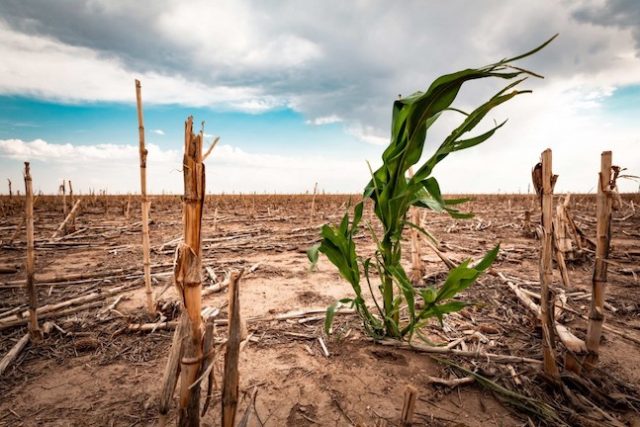[ad_1]

Government officials have announced the establishment of two scientific committees that aim to create an advanced nationwide agricultural weather information system and implement technology-driven assessments of crop yields to mitigate the impacts of extreme weather linked to climate change.
These committees include experts from various fields and representatives from several states. Working at the Mahalanobis National Crop Forecasting Center in New Delhi, he aims to enhance response to the climate crisis, which has adversely impacted yields and farm incomes.
Climate change and agriculture sector
A significant portion of India’s workforce is employed in agriculture, which contributes 18% to the country’s GDP. Climate scientists have consistently warned about the threats posed by severe heat waves, changes in rainfall patterns and floods to India’s food security, especially its rice and wheat crops, which are vital to feeding the country. .
In recent years, heat waves have significantly impacted India’s wheat production. Wheat yields were reduced due to high temperatures during the crop season in 2022 and 2023. Additionally, India experienced its wettest March two years ago, resulting in the loss of 3 million tonnes of winter crop. Monsoon delays over the past three years have led to floods in many states, damage to oilseeds and pulses crops and delays in rice harvesting.
Federal wheat stocks have fallen to a 16-year low this month due to inclement weather. Low food stocks have forced India to impose a ban on exports of wheat, rice and onions, which is still in effect, causing financial losses to farmers.
data collection
The first committee aims to deploy a network of high-tech automated weather stations to collect timely data and forecasts, thereby helping farmers and policy makers better prepare for temperature fluctuations, drought and extreme rainfall events. So to receive.
The first of four reports of the Intergovernmental Panel on Climate Change (IPCC) due in 2022 underlined India’s vulnerability to climate change, including changing monsoons, rising sea levels, more intense heat waves, severe storms, floods. And evidence of glacial melting was highlighted. The monsoon rain system, important for the country’s agriculture, irrigates 60% of the country’s crops.
According to studies, agriculture is particularly vulnerable to climate risks due to its visibility. The government’s Economic Survey of 2017-18 estimated that the loss of average rainfall due to extreme weather events and drought exceeds 40%, which could reduce farmers’ income by 14%.
understanding loss
The second committee aims to expedite the assessment of yield losses due to extreme weather events to facilitate prompt payments under the flagship Pradhan Mantri Fasal Bima Yojana (Pradhan Mantri Fasal Bima Yojana). Scientists are exploring satellite data and artificial intelligence technologies for yield estimation. Better yield estimates are important for national food security in view of frequent changes in weather patterns.
The government is adopting advanced technologies for crop production estimation. The ministry is running a program called Yield Estimation System based on Technology (YES-Tech) for rice and wheat data collection using satellite and remote sensing data.
The YES-Tech program currently focuses on assessing crop losses to enhance agricultural insurance scheme implementation.
Rising temperatures have increased the demand for resources in Indian agriculture. Indian Council of Agricultural Research (ICAR) study shows that farming in states like Andhra Pradesh, Punjab and Rajasthan now requires 30% more water due to increased evaporative demand and extended crop duration.
Due to insufficient cold in Himachal Pradesh, apple orchards are shifting to higher altitudes. According to the ICAR study, temperatures have increased in apple growing areas, while rainfall has decreased in Lahaul and Spiti and Kinnaur in recent years.
[ad_2]
Source link
Modified by Maaaty at Tuto Gadget

